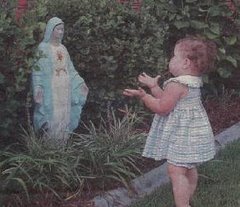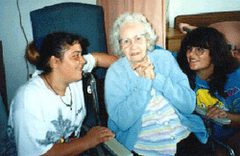Trends are of great interest, especially religious and social. Trends represent the best predictions of the future that we have. The State of Our Unions by Barbara Dafoe Whitehead and David Popenoe documents marriage trends in the U.S. and the future looks very bleak. Even though other bloggers have commented widely, some of the most troubling observations of the authors are extracted from their report.
1. In 2004, almost one out of five women in their early forties was childless. In 1976, it was one out of ten. [Note that twice as many women are now childless.]
2. For the college-educated minority of the American population, marriage appears to have gotten stronger in recent years. For everyone else, marriage continues to get weaker. The percentage of spouses among the college educated group who rate their marriage as “very happy” has held fairly steady over recent decades, whereas for other parts of the population the percentage has dropped significantly. Yet, college-educated women aren’t having enough children to replace themselves.
3. For the non college-educated population, ... Marriage rates are continuing to decline, and the percentage of out-of-wedlock births is rising. Because of the many statistically well-documented benefits of marriage in such areas as income, health, and longevity,... America is becoming a nation divided not only by educational and income levels, but by unequal family structures.
4. In 1970, the median age of first marriage for women was not quite 21. Since then the age of first marriage has risen to just short of 26.
5. In 1960, 71 percent of married women had a first birth within the first three years of marriage. By 1990, the percentage had fallen to 37.
6. In 1970, 27.4 percent of women, ages 50-54, had at least one minor child of their own in the household. In 2000, that percentage had fallen to 15.4.
7. Women who hold four-year college degrees are more likely to be childless than women with lower levels of educational attainment.
8. In 1970, 57.3 percent of men, ages 25-29, lived with their own children in the household. In 2000, that share had fallen to 28.8 percent. Of men, ages 30-34, 74.7 percent lived with their own minor children in the household in 1970. In 2000, the share was 46.9 percent.
9. The sex lives of the young and old have been liberated [their words, not mine!] from the traditional association with marriage and children. Many of today’s parents are entering the empty nest years with subscriptions to Match.com, prescriptions for Viagra and hopes for hot new romances. What the two new life stages [before and after a minimum period of child-rearing] have in common is a focus on the self.
10. Victorian brides were shocked by their first experience of sex. Contemporary wives are shocked by their first experience of motherhood. For them, motherhood represents a radical change in the kind of life that they have led during their early adult life and have come to accept as the norm.
11. Television has long made fun of fathers. Now, in a dramatic departure from television tradition, it has turned to ridiculing mothers. The Unfit Mom has become a reality show staple.
12. Demographically, socially and culturally, the nation is shifting from a society of child-rearing families to a society of child-free adults. The percentage of households with children has declined from half of all households in 1960 to less than one-third today—the lowest percentage in the nation’s history.
13. Over half of all first marriages are now preceded by living together, compared to virtually none 50 years ago.
14. A substantial body of evidence indicates that those who live together before marriage are more likely to break up after marriage.
15. For the average couple marrying for the first time in recent years, the lifetime probability of divorce or separation remains between 40 and 50 percent.
16. Although the long-term trend in divorce has been upward since colonial times, the divorce rate was level for about two decades after World War II during the period of high fertility known as the baby boom. [Read that one again.]
17. Divorce is much less likely to occur "if you are a reasonably well-educated person with a decent income, come from an intact family and are religious, and marry after age twenty five without having a baby first."
18. In 2004, the American "total fertility rate" (TFR) stood at 2.049, slightly above two children per woman. This rate is below the “replacement level” of 2.1, the level at which the population would be replaced through births alone.
I'm going to stop quoting from the authors and recommend that you read the rest of the report for yourself. ESPECIALLY READ the section called "The Surprising Economic Benefits of Marriage." In it you will find why marriage is a wealth generating institution. Also read the section on "Fragile Families with Children" that discusses the negative life outcomes of fatherless families.
Daily Rome Shot 1414 – Beware!
17 hours ago









1 comment:
I'm laughing about #10- Victorian women were shocked by their first experience of sex and contemporary women are shocked at their first experience of motherhood! LOL
Post a Comment